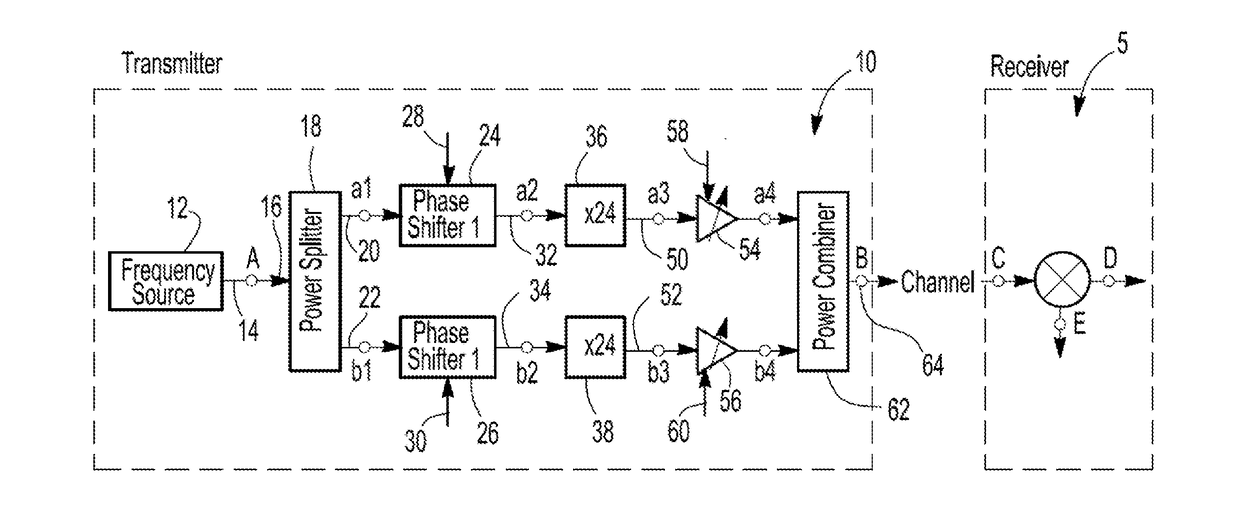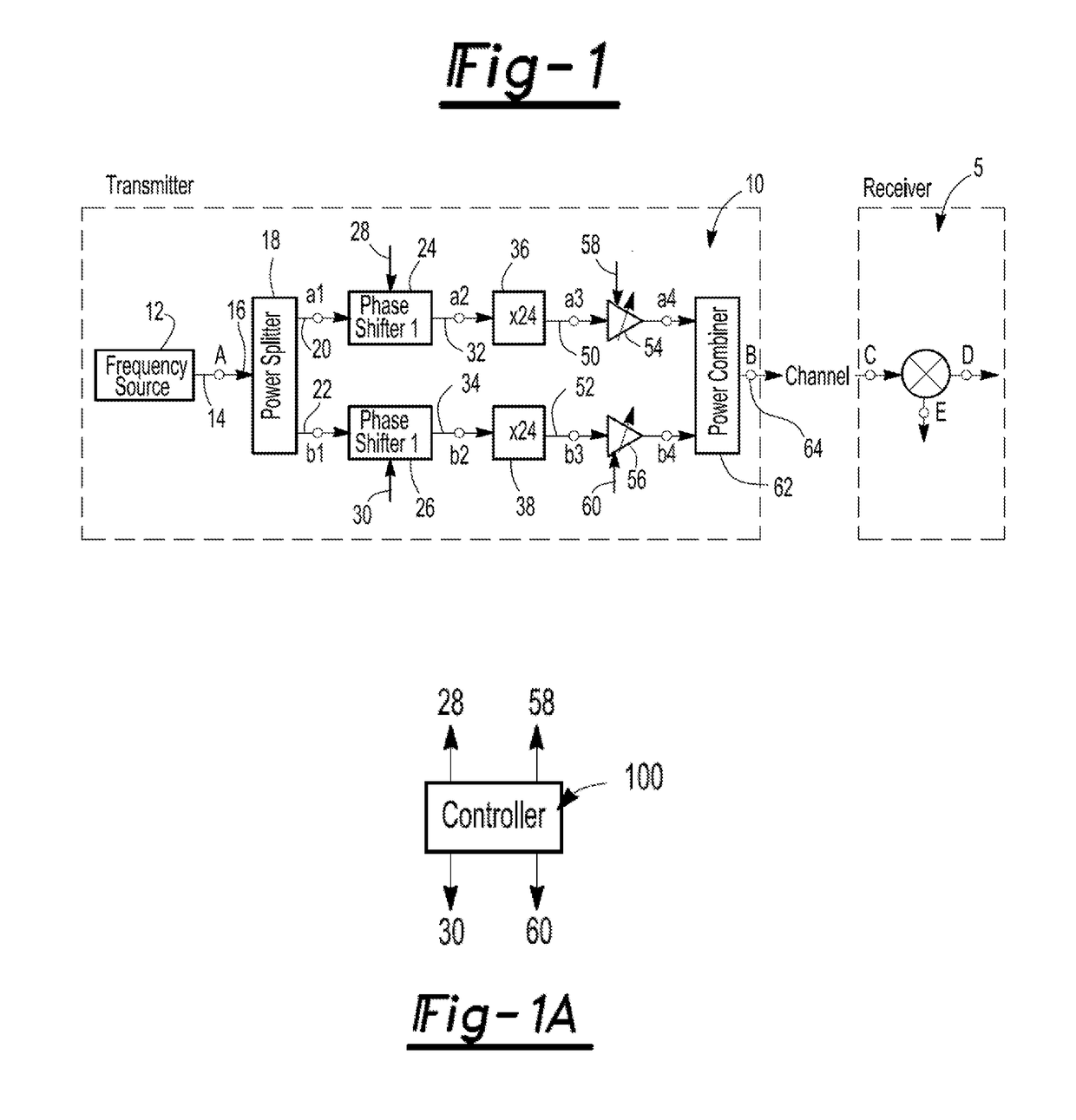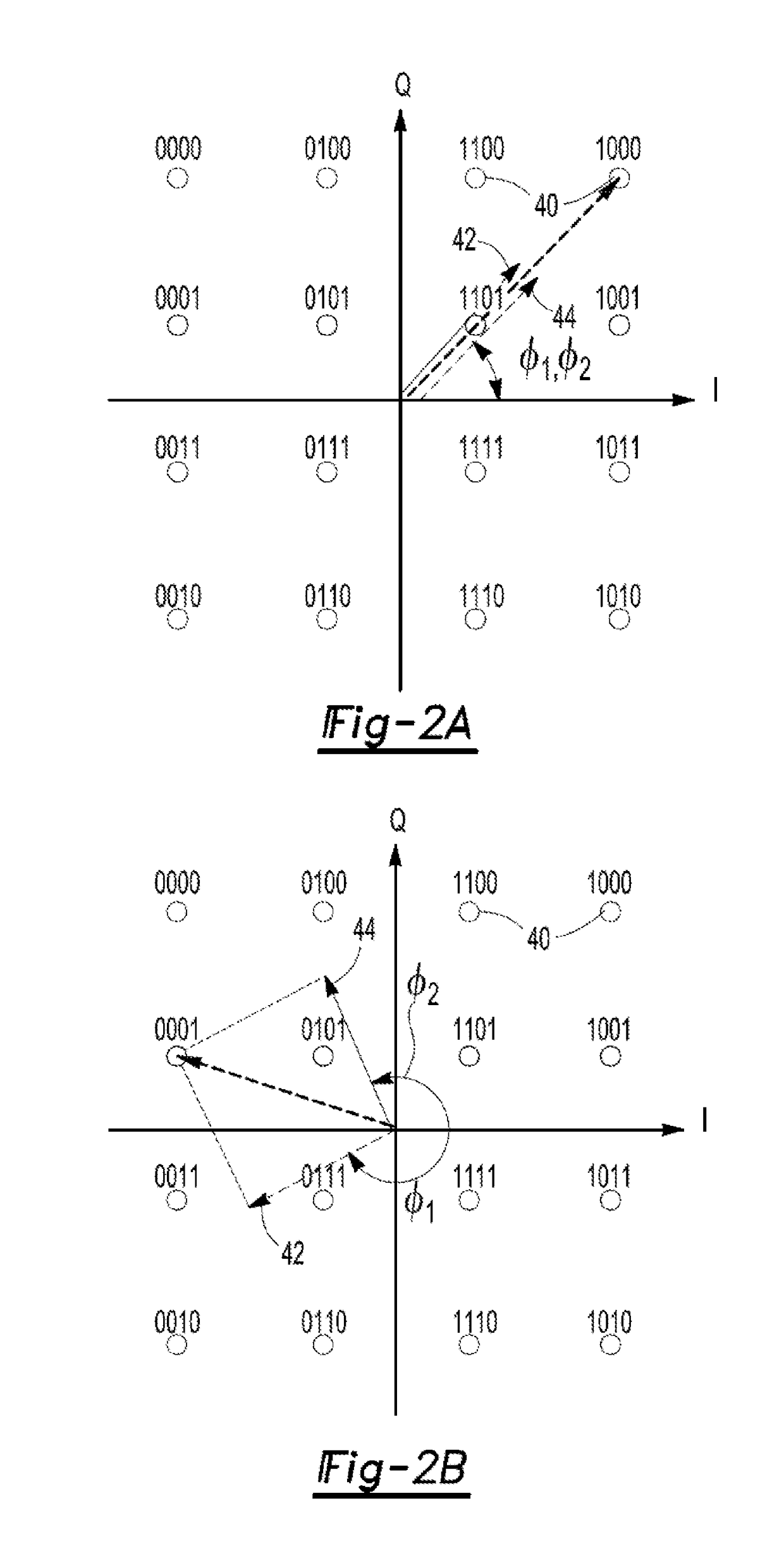High frequency multi-antenna transmitter(s)
a multi-antenna transmitter and high frequency technology, applied in the field of high frequency multi-antenna transmitters, modulating the transmission signal, can solve the problems of inability to transmit low frequency signals such as voice or video, difficulty in transmitting low frequency signals, and insufficient length of necessary antenna radiators
- Summary
- Abstract
- Description
- Claims
- Application Information
AI Technical Summary
Benefits of technology
Problems solved by technology
Method used
Image
Examples
first embodiment
[0030]With reference first to FIG. 1, a block diagrammatic view illustrating a first embodiment radio frequency transmitter 10 is shown. The transmitter 10 is used in conjunction with a receiver 5 also illustrated in FIG. 1. The receiver 5 may be any conventional RF receiving device.
[0031]The transmitted 10 may be configured as high frequency transmitter in some embodiments. As used herein, the term “high frequency transmitter” shall mean a radio frequency transmitter transmitting at a frequency range in excess of 10 gigahertz and typically in the range of 0.1 terahertz to 10 terahertz. The use of high frequency provides many benefits over lower frequency communications. First, due to high frequency, the transmitted signal propagates in laser-like beams. Hence, communications can be very secure. Additionally, the high frequency opens the door to very broadband (e.g., tens of gigabits per second) communications. Also, a number of chemical and bio agents have resonances at high freque...
example 1 (fig.2a)
Example 1 (FIG. 2A)
[0053]Suppose we would like to transmit symbol a 16QAM signal and suppose the maximum I amplitude, and Q amplitude is 3. The maximum amplitude for 16QAM signals occurs at symbols 0000, 1000, 0010, and 1010, see FIG. 2A. Then, for symbol 1000 which is defined as I=3, and Q=3, we have,
|S|max=√{square root over (I2+Q2)}=√{square root over (32+32)}=3√{square root over (2)}=4.24.
ΦS=tan−1((Q / I)=tan−1(3 / 3)=45°
S=4.24∠45°
|v1|=|S|max / 2=4.24 / 2=2.12
|v2|=|v1|=2.12
dΦ=cos−1(|S| / |S|max)=cos−1(4.24 / 4.24)=0°
φ1=ΦS−dΦ=45°−0°=45°
φ2=ΦS+dΦ=45°+0°=45°
example 2 (fig.2b)
Example 2 (FIG. 2B)
[0054]Suppose that we want to transmit symbol 0001, which is defined as I=−3 and Q=1. This is shown in FIG. 2B. Then, we have,
|S|=√{square root over (I2+Q2)}=√{square root over ((−3)2+12)}=3√{square root over (2)}=3.16
ΦS=tan−1(Q / I)=tan−1(1 / −3)=161.57°
S=3.16∠161.57°
|v1|=|S|max / 2=4.24 / 2=2.12
|v2|=|v1|=2.12
φ1=ΦS−dΦ=161.57°−41.82°=119.75°
φ2=ΦS+dΦ161.50°+41.82°=203.39° (or −156.6°, as shown)
[0055]For the case where the vectors and a4 and b4 have unequal amplitudes (|v1|≠|v2|), we can still add them to construct a transmit vector S with amplitude |S| and phase ΦS by observing that:
S=|S|∠ΦS=Sxx+Syy=|S|(cos(ΦS)x+sin(ΦS)y)
v1=|v1|∠φ1=v1xx+v1yy=|v1_51 (cos(φ1)x+sin(φ1)y)
v2=|v2|∠φ2=v2xx+v2yy=|v2|(cos(φ2)x+sin(φ2)y)
[0056]where the vectors have been decomposed into their x, and y components.
[0057]Given that S=|S|∠ΦS=|v1|∠φ1+|v2|∠φ2
[0058]Then the following pair of equations can be solved for the two unknowns φ1, and φ2
Sx=|v1|cos(φ1)+|v2|cos (φ2)
Sy=|v1|sin(φ1)+|v2|sin(φ2)
[0059]T...
PUM
 Login to View More
Login to View More Abstract
Description
Claims
Application Information
 Login to View More
Login to View More - R&D
- Intellectual Property
- Life Sciences
- Materials
- Tech Scout
- Unparalleled Data Quality
- Higher Quality Content
- 60% Fewer Hallucinations
Browse by: Latest US Patents, China's latest patents, Technical Efficacy Thesaurus, Application Domain, Technology Topic, Popular Technical Reports.
© 2025 PatSnap. All rights reserved.Legal|Privacy policy|Modern Slavery Act Transparency Statement|Sitemap|About US| Contact US: help@patsnap.com



